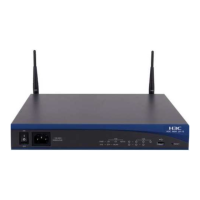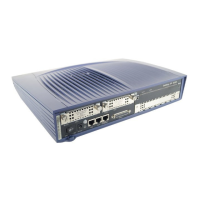Session : up
Tunnel ID : 0x2002002,
*Peer Router ID : 1.1.1.9
VC Label : 23553
Peer Type : dynamic
Session : up
Tunnel ID : 0x1002000,
Interface Name : Vlanif30
State : up
Interface Name : Vlanif70
State : up
**PW Information:
*Peer Ip Address : 1.1.1.9
PW State : up
Local VC Label : 23553
Remote VC Label : 23552
PW Type : MEHVPLS
Tunnel ID : 0x1002000,
Run the display vsi remote ldp [ route-id ip-address ] [ pw-idpw-id ] command, and you can
view information about remote VSIs using LDP as the signaling. For example:
<Quidway> display vsi remote ldp
Vsi Peer VC Group Encap MTU Vsi
ID RouterID Label ID Type Value Index
123 2.2.2.9 23553 0 vlan 1500 0
6.6 Configuring Static VLLs to Access a VPLS Network
This section describes how to configure static VLLs to access a VPLS network.
6.6.1 Establishing the Configuration Task
6.6.2 Configuring a Static LSP Between a UPE and an SPE
6.6.3 Configuring a UPE to Access an SPE Through a Static VLL
6.6.4 Binding a Static VLL to a VSI on an SPE
6.6.5 Checking the Configuration
6.6.1 Establishing the Configuration Task
Applicable Environment
In actual networks such as a MAN, if a UPE does not support the dynamic VLL, the UPE needs
to access SPEs through static VLLs. A UPE and an SPE set up a static virtual circuit (SVC) to
create a VLL.
Pre-configuration Tasks
Before configuring static VLLs to access a VPLS network, complete the following tasks:
l Configuring an IGP on the Ps and SPEs in the MPLS backbone network to implement IP
connectivity
l Implementing the connectivity between SPEs in the VPLS fully-connected network
l Setting up dynamic LSPs or static LSPs between UPEs and SPEs
Quidway S9300 Terabit Routing Switch
Configuration Guide - VPN 6 VPLS Configuration
Issue 03 (2009-08-20) Huawei Proprietary and Confidential
Copyright © Huawei Technologies Co., Ltd.
6-21

